
- Home
- Photography Tours
- Diary / Blog
- Galleries
- Foreign Trips
- Tasmania 2016
- NE Queensland 2016
- Western Alps 2016
- NE Spain 2016
- Australia's Wet Tropics 2015
- Australia's Top End 2015
- SW Australia 2015
- Switzerland 2015
- Andalucia 2015
- Belize 2015
- Australia 2014
- Switzerland 2014
- Belize 2014
- Bahama Islands 2014
- Switzerland 2013
- Ecuador 2012-2013
- Florida 2011-2012
- Vancouver Island 2011
- Australia 2010
- Peru 2008
- Bulgaria 2007
- Lesvos 2006
- California 2006
- New Zealand 2005
- Extremadura 2005
- Goa, India 2004
- The Gambia 2003
- About
2nd-12th February 2016
Scottish Highlands
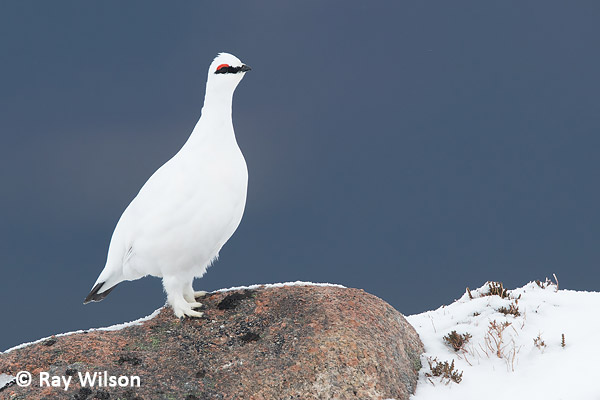
male Rock Ptarmigan (Lagopus muta)
It has been a very mild winter this year and the weather was unusually warm for most of the time I spent in the Highlands this year. Most years when I visit in February, the maximum temperature is usually struggling to reach zero Celsius. This year, it was struggling to drop below zero even in the middle of the night. This meant that snow cover could only consistently be found on the high slopes above 700m.
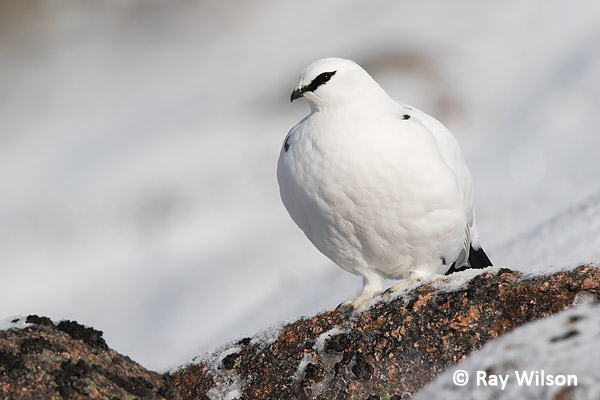
female Rock Ptarmigan (Lagopus muta)
Even up at the base of the Northern Corries (about 900m asl) snow cover was not complete and the tips of the heather were still poking through the snow in places. Over the years, I've always found this area to be an extremely reliable spot for viewing Ptarmigan in the winter and this year they seemed especially abundant.
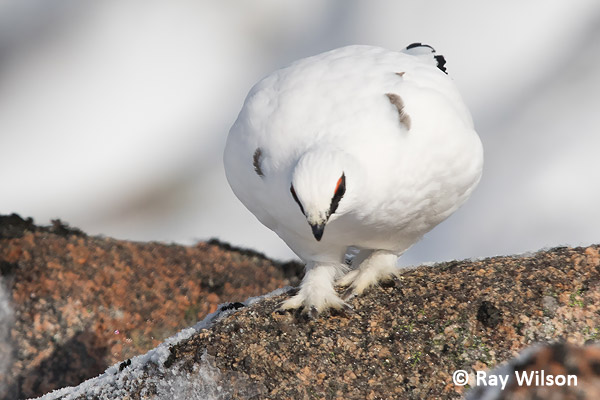
male Rock Ptarmigan (Lagopus muta)
The Rock Ptarmigan is highly adapted for living in the harsh environments of rocky tundra found on upper mountain slopes and in the high Arctic and is rarely found below the tree-line. Its thickly feathered feet help to insulate it against the cold.
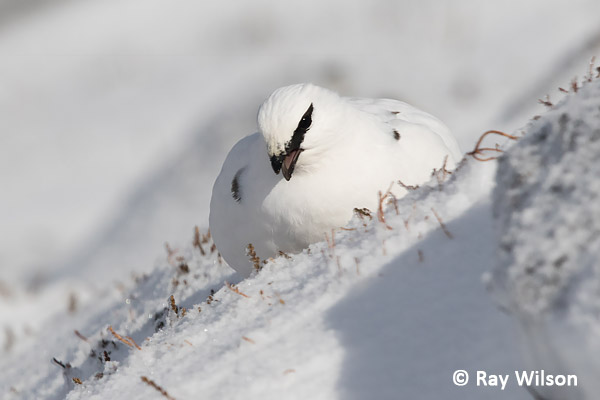
female Rock Ptarmigan (Lagopus muta)
Since they are reliant on ground vegetation for food, they prefer windswept slopes where the snow cover is not too deep so they don't have to dig too deeply to reach their preferred foodplants.
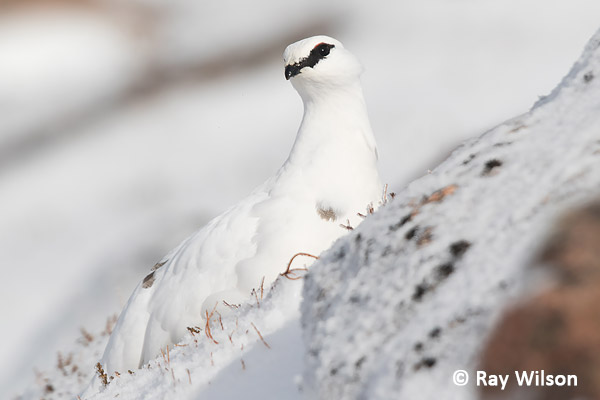
female Rock Ptarmigan (Lagopus muta)
Red Grouse are also common on the Scottish mountains, although these usually occur at lower altitudes than Ptarmigan. This year, however, due to the sparse snow-cover, the Red Grouse appeared to be occupying higher territories than I usually see them at, and were sometimes seen side-by-side with the Ptarmigan.
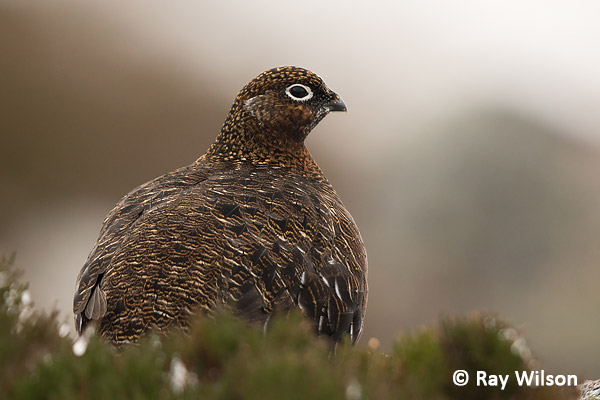
female Red Grouse (Lagopus lagopus scotica)
Red Grouse, the British race of Willow Grouse, exhibits the least seasonal dimorphism of its species. In other areas where Willow Grouse occur, such as Scandinavia, northern Russia or Canada, the Willow Grouse turns at least partially, sometimes wholly, white during the winter. The degree to which this occurs depends largely on the prevailing weather conditions of the area within which it lives and subspecies of Willow Grouse which live where higher annual snowfall occurs tend to turn whiter than those from areas where snow is less common. The British race is the most extreme example and they remain completely reddish brown throughout the year.
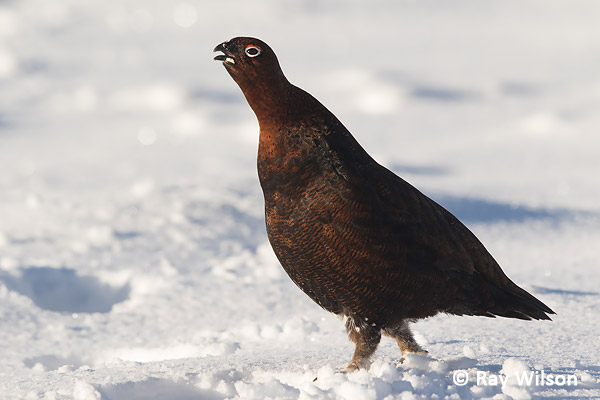
male Red Grouse (Lagopus lagopus scotica)
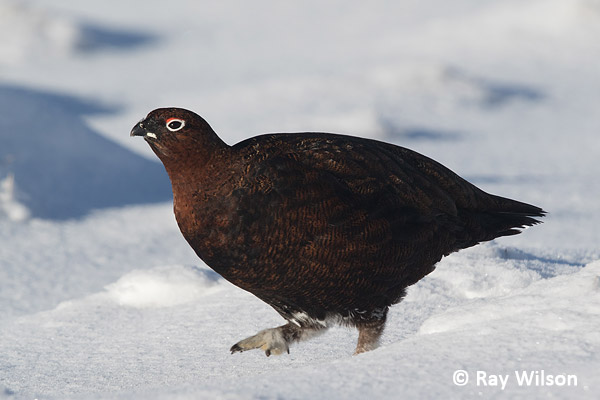
male Red Grouse (Lagopus lagopus scotica)
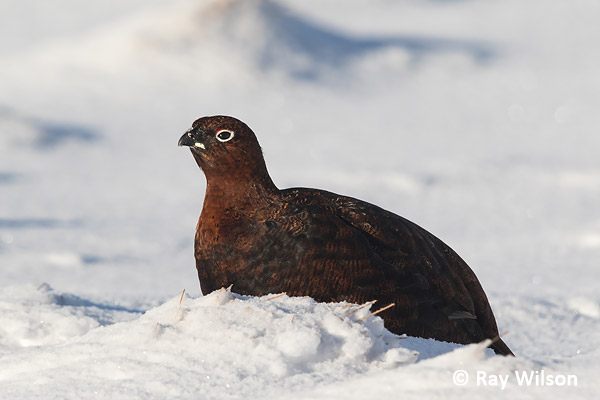
male Red Grouse (Lagopus lagopus scotica)
I didn't have much luck in the forests this year and didn't even see a single crossbill or Red Squirrel. In fact, the only photo I took after 3 days searching the forests was this wood carving that marks the start of one of the cycle/footpaths that traverse the Glenmore Forest. Despite the mild weather, it looked like it was still feeling a bit chilly...
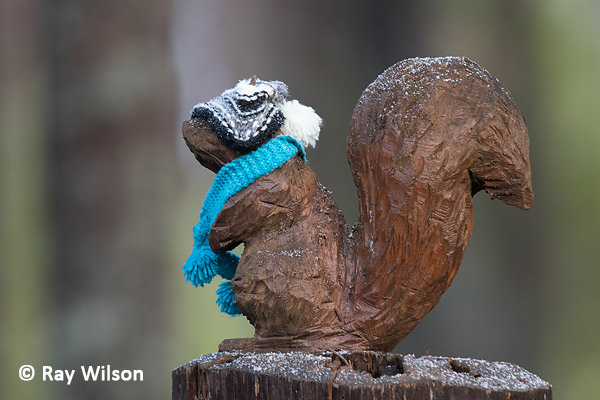
even the sculptures wrap up warm in the Scottish winter
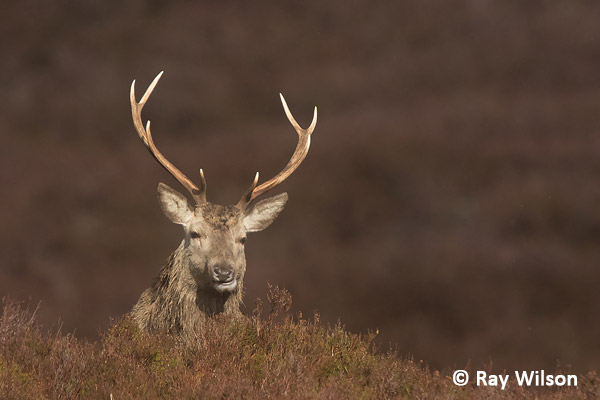
Red Deer stag (Cervus elaphus)
Red Deer is the largest native land animal found in Britain and over 80% of the entire British population is found in the Scottish open hill-country.
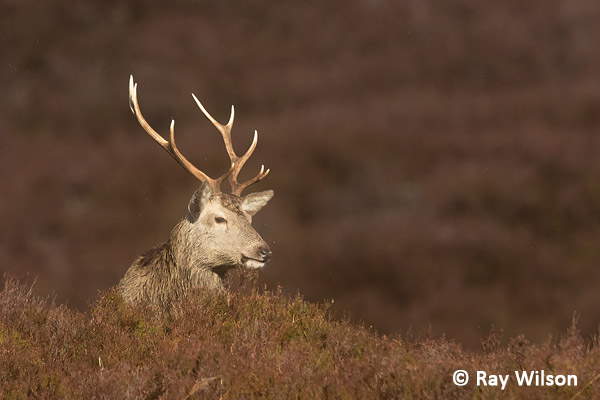
Red Deer stag (Cervus elaphus)
Except for a short period during the rut (mating season), male and female Red Deer rarely interact and are generally found in single sex herds, with the males often found in rougher, less fertile terrain than the females.

Red Deer stags (Cervus elaphus)
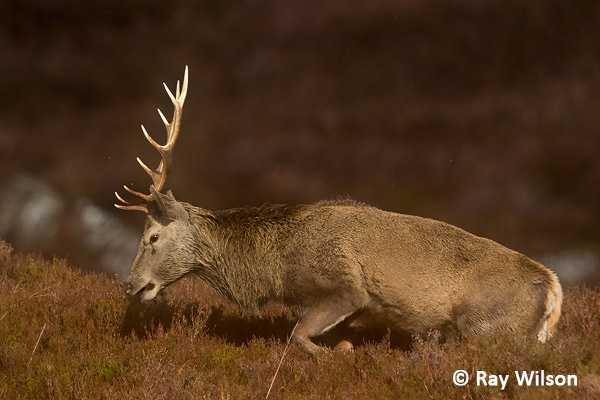
Red Deer stag (Cervus elaphus)
Generally speaking, the more points (tines) on the antlers, the older the stag but, contrary to popular belief, the number of tines or the size of the antlers does not necessarily give an accurate estimation of its age.
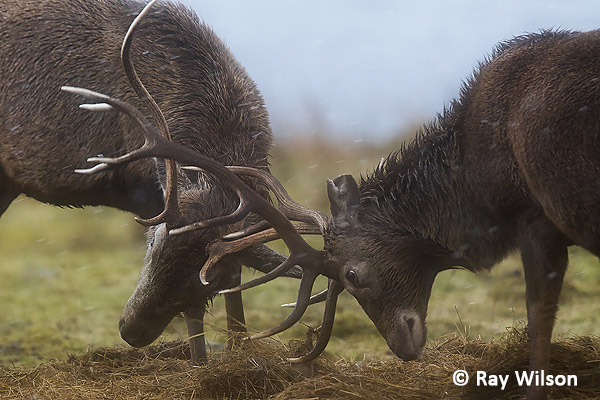
Red Deer (Cervus elaphus) stags jousting
In February, the rut is long past, so any jousting that occurs is usually a lot less violent and is used as a means of establishing and maintaining the hierarchy within the herd. Neither of the two stags photographed here were putting much effort into the contest. When they are not competing for breeding rights, it is in neither's interest to risk unnecessary injury so they only use the minimum level of force to establish which of the two is the stronger, more dominant animal. Within the herd, the dominant individuals tend to occupy the central areas with the more submissive individuals found on the fringes.
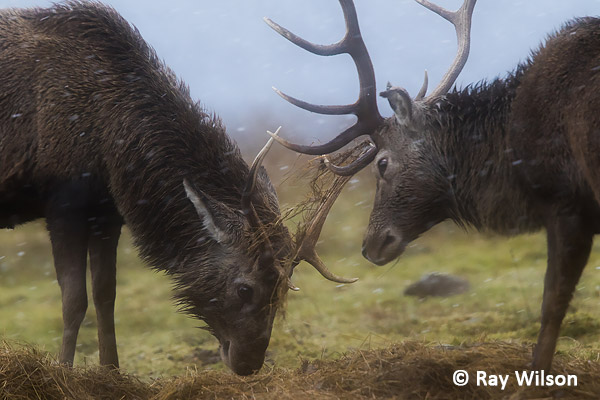
Red Deer (Cervus elaphus) stags jousting
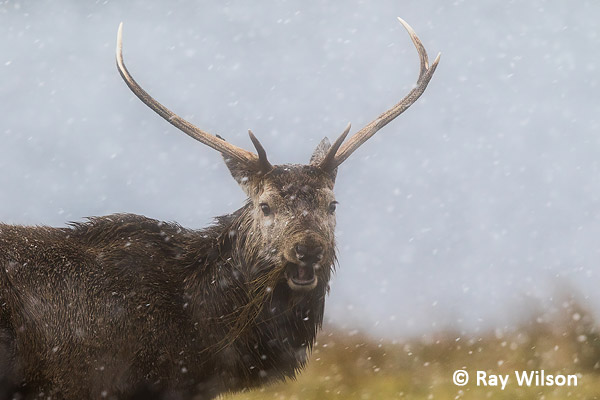
Red Deer stag (Cervus elaphus) in a snowstorm
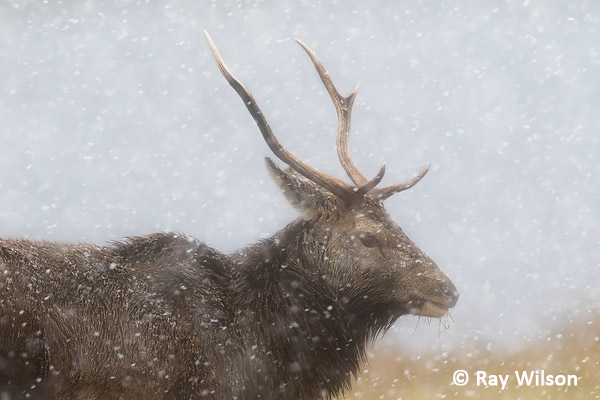
Red Deer stag (Cervus elaphus) in a snowstorm
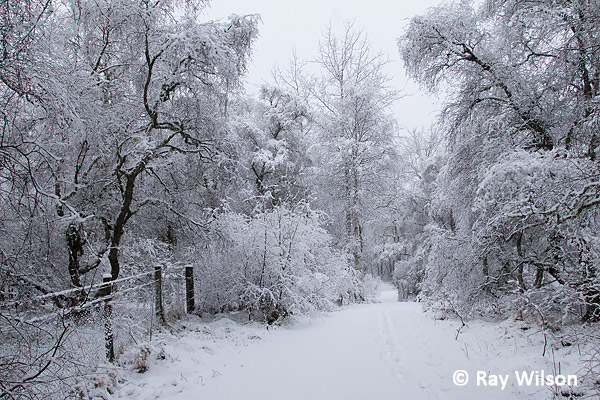
Kincraig - Aviemore cycle path after a heavy overnight snowfall
On my last day of this trip about 15cm (6inches) of snow fell overnight, transforming the landscape...

Kincraig - Aviemore cycle path after a heavy overnight snowfall
Ray Wilson owns the copyright of all images on this site.
They may not be used or copied in any form without prior written permission.
raywilsonphotography@googlemail.com